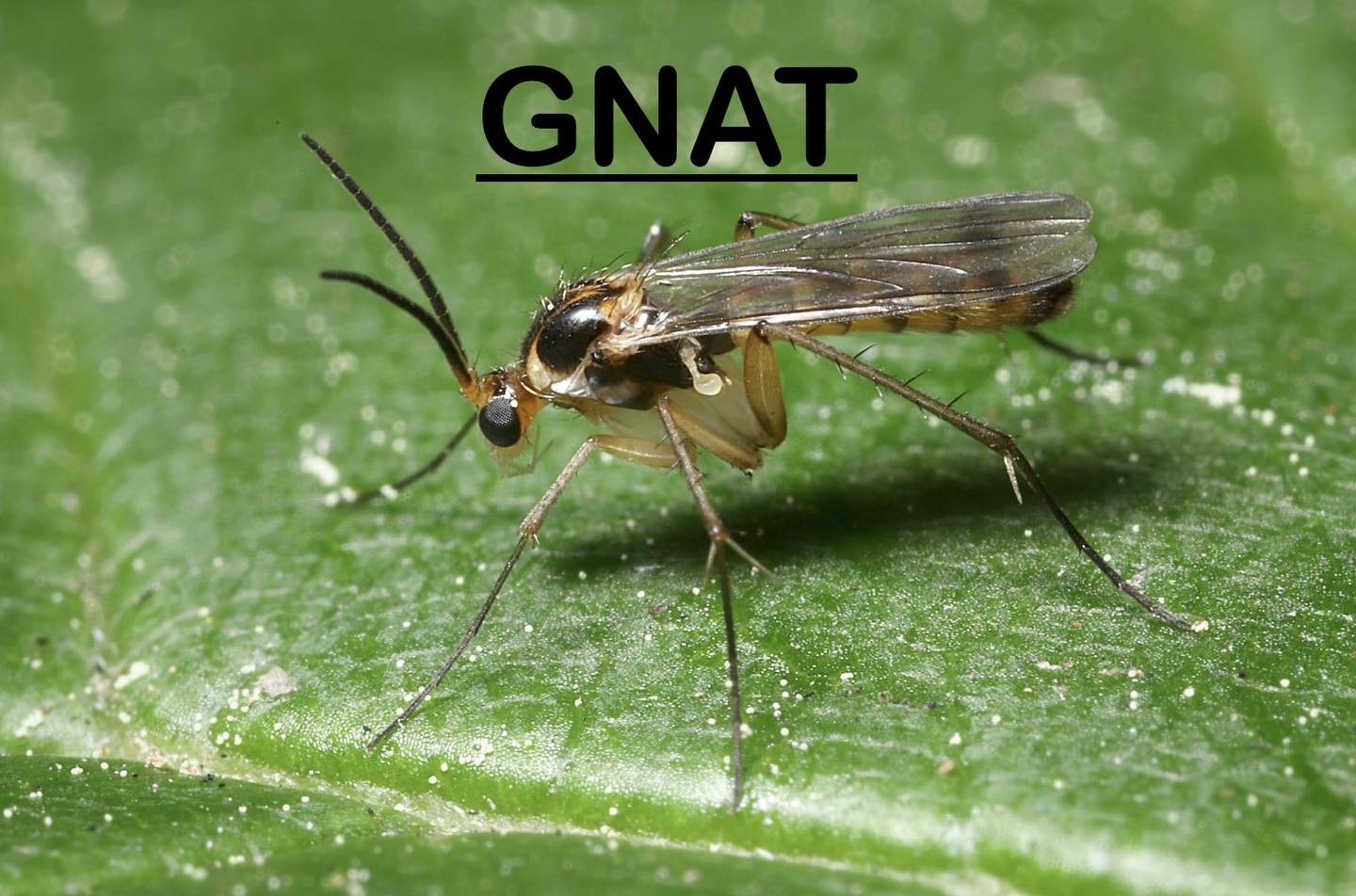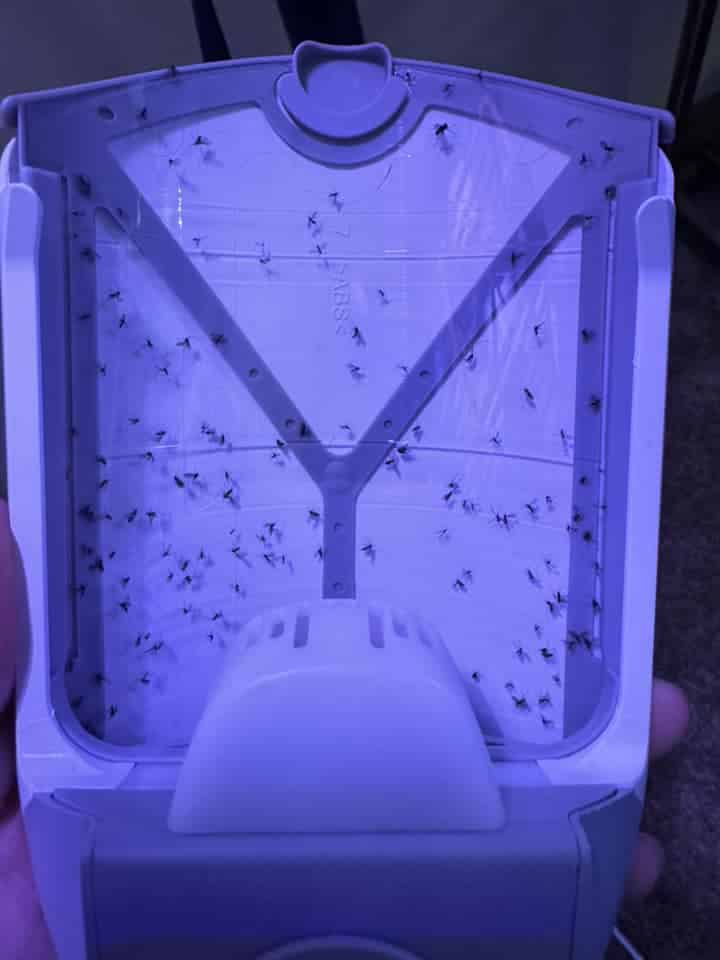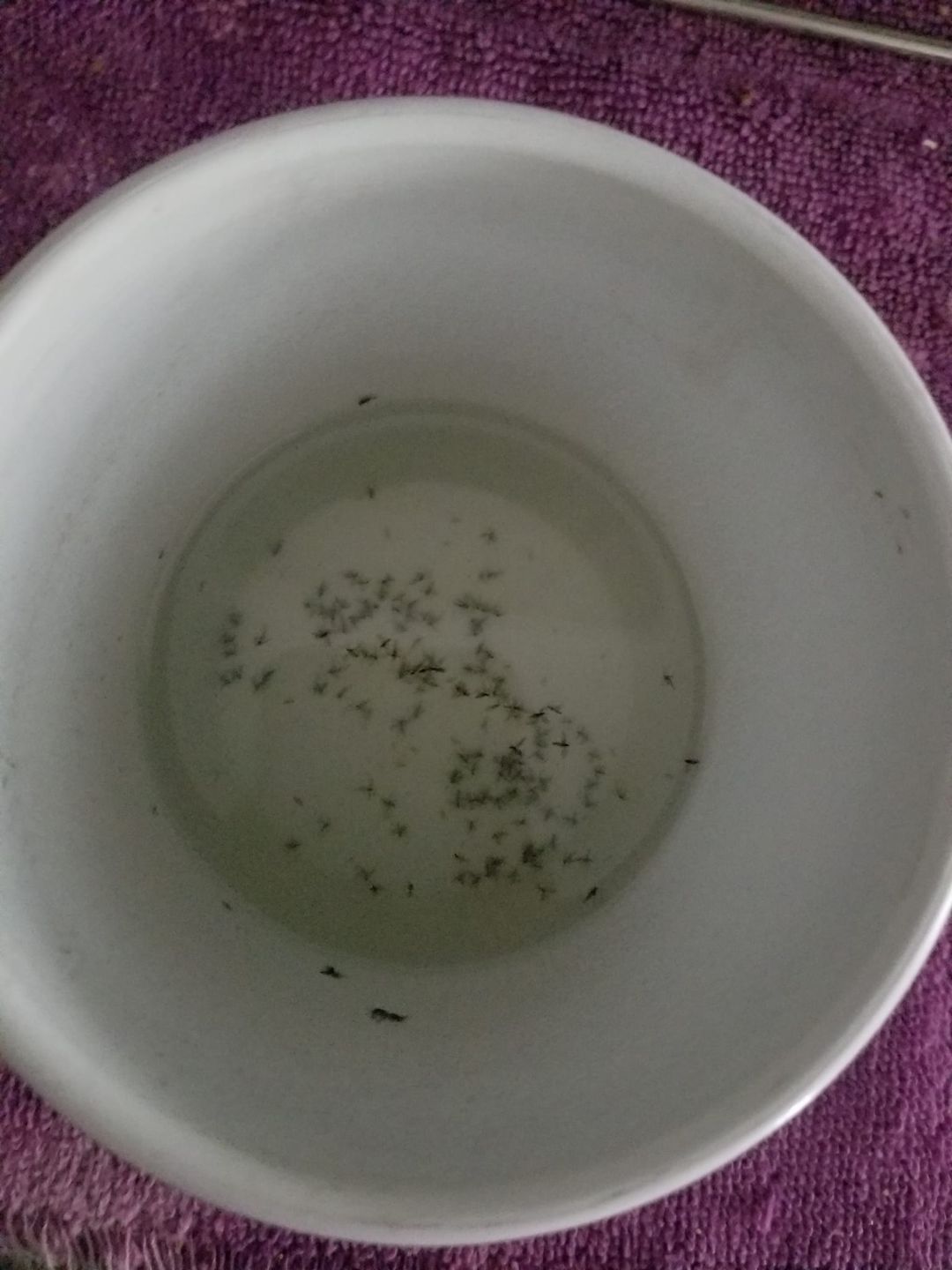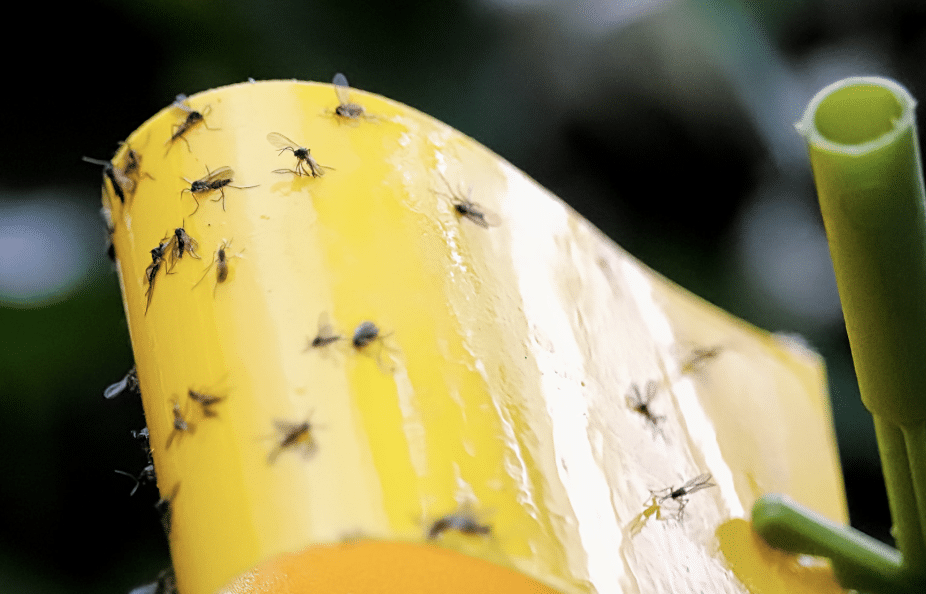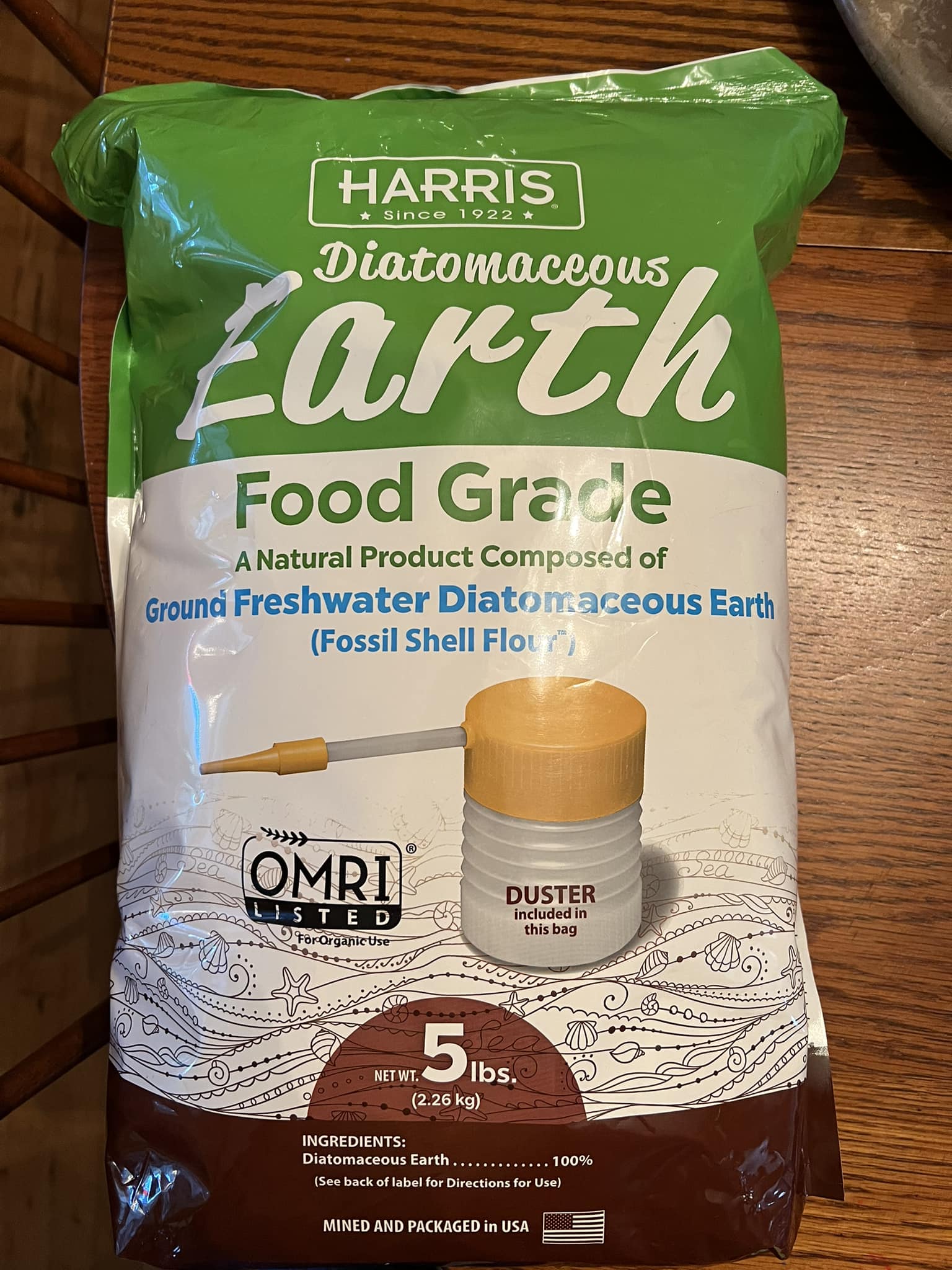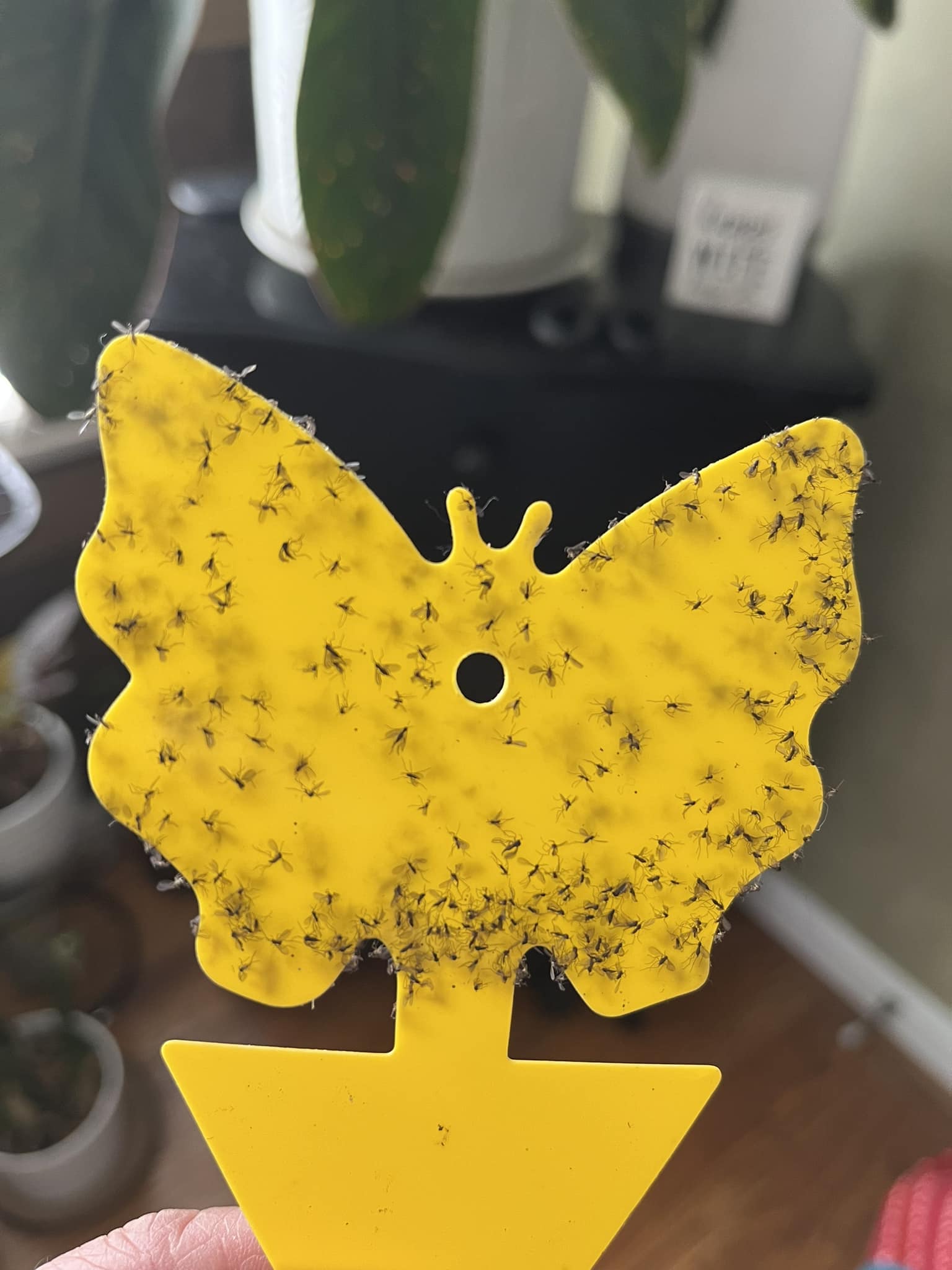Is the constant buzzing of gnats in your house becoming a nuisance? I understand. Although these insects are tiny and seem innocuous, that is far from the truth. Gnats are annoying, multiply quickly, and can spread bacteria and contaminate food.
Gnats often congregate around your fruits, hover near your houseplants, and generally make themselves known in different parts of your house, especially the kitchen. Thankfully, getting rid of gnats doesn’t have to be daunting, but you must act early.
Read on for practical tips on how to get rid of gnats in the house whether you prefer natural solutions or are open to commercial products, but first,
What are Gnats?
Gnats are miniature flying insects characterized by delicate wings, long legs, and slender bodies. Some bite while others don’t.
These insects are often found in damp environments, such as near bodies of water, moist soil, or decaying organic matter. However, they can also invade your living spaces. Gnats come in different types, including the more common fungus gnats, fruit flies, drain flies, no-see-ums, and gall gnats.
If you find gnats in your house, chances are they gravitate into your living space because of moisture, indoor plants, light, decaying organic material, food residue, garbage, and warm temperatures.
Read More: How To Get Rid Of Fruit Flies
9 Effective Ways To Get Rid of Gnats In Your House
You can rely on the methods below to reclaim your house from a gnat invasion.
1. Use A Vinegar Trap
Vinegar can help you eliminate gnats; you probably already have it at home. You will need something to draw them in and keep them long enough for the vinegar to kill them. The options include sugar and overripe fruits.
Below are the various ways to kill gnats with vinegar.
a) Make A Vinegar, Overripe Fruit, and Paper Cone Trap
Pour vinegar into a jar, filling it about one-third to halfway full. Add some dishwashing soap to break the vinegar’s surface tension. Next, drop a piece of overripe fruit into the jar to attract the gnats.
Roll some paper into a funnel shape and place it into the jar with the cone’s narrow end facing down, ensuring a snug fit. Instead of making this trap, you can also buy it from a store.
b) Make A Vinegar and Sugar Trap
Mix equal parts vinegar and granulated sugar in a bowl, then add dish soap. Stir the mixture gently to dilute the sugar. Cover the bowl with plastic wrap or a plastic bag, securing it tightly with a rubber band or tape around the rim. Leave an opening for the gnats to enter.
Note
Position your trap in areas where you’ve noticed a lot of gnat activity, such as near fruit bowls, trash cans, or houseplants.
2. Red Wine or Beer Trap
Gnats, particularly fruit flies, like the smell of wine and fruity beer. Therefore, you can use them to trap these insects. Leave a nearly empty beer or red wine bottle at a strategic location, such as near your kitchen drain. The gnats will crawl in to get to the alcohol and get trapped inside.
Alternatively, pour some beer or red wine trap into a bowl, enough to cover the bottom but not fill it too high. Break the red wine or beer’s surface tension by adding dish soap. This way, the gnats will drown and die upon contact.
3. Set Up Sticky Traps
Store-bought sticky traps are convenient and effective in getting rid of gnats. Buy sticky traps like ribbons, cards, or flypaper and set them up around your house to kill gnats. Sticky traps are usually designed to lure the gnats with a sweet fragrance or bright color.
The gnats then land on the surface coated with a strong adhesive that prevents them from flying away. Sticky traps will keep capturing gnats as long as the adhesive remains effective.
4. Flush The Drain With Boiling Water
Prevent a new generation of gnats by killing their eggs with boiling water. Hot water will also flush out organic matter or debris that attracts gnats and their larvae.
Boil a pot or kettle of water and carefully pour it down the drain, ensuring it flows freely into the pipe. Alternatively, run the hot water from your faucet for several minutes to heat the pipes, and then pour the hot water down the drain.
Repeat this process regularly, such as once a week or every few days, to keep drains clean and prevent gnat infestations.
5. Kill Them With Bleach
Besides boiling water, you can also use bleach to kill gnats in your drains. Dilute 1/2 of bleach and pour it into your drains. Alternatively, use a drain cleaner instead of bleach.
Do not use bleach or drain cleaners on your drains excessively because these products can damage your plumbing and environment.
6. Sprinkle Food-grade Diatomaceous Earth (DE)
Dust food-grade diatomaceous earth around areas in your house where gnats congregate to dehydrate and kill them. For instance, mix diatomaceous earth directly into the soil of your potted plants to help prevent gnat larvae from emerging.
Alternatively, sprinkle it on the soil to create a barrier that deters adult gnats from laying eggs. Also, dust it in other areas where gnats are present, such as around sinks, cracks, drains, crevices, and garbage bins.
7. Use Bacillus thuringiensis var. israelensis (Bti)
Bti, a naturally occurring bacterium found in soil, effectively kills fungus gnats larvae by producing toxins that specifically target them. These toxins disrupt the larvae’s digestive system, leading to their death within a few days after ingestion.
It doesn’t harm pets, most non-target organisms, and humans. Bti is available in various formulations, including granules, tablets, dunks, and liquid sprays.
Sprinkle Bti granules or tablets onto your houseplants’ soil surface, place dunks or tablets in water trays under pots, or water the soil with a Bti solution if using a liquid spray. Adhere to the manufacturer’s instructions.
8. Deter Gnats With Essential Oils
Some essential oils like tea tree, peppermint, lavender, citronella, and eucalyptus can repel gnats, thus keeping them away from your house. Dilute the essential oil, place it in a spray bottle, and mist it around areas with gnats or where you want to prevent them from entering.
Instead of the spray, soak cotton balls in the diluted oil and put them in problematic areas, such as near windows or doorways.
9. Apply Insecticides
Resort to insecticides if other strategies fail or in a severe infestation. Try insecticides specifically labeled for indoor use and formulated to target flying insects like gnats.
Before application, remove food, dishes, or utensils from the area you want to treat and cover or remove exposed food or food preparation surfaces. Then, spray gnat breeding areas like around houseplants, drains, or damp areas like bathrooms or kitchens.
Note
Opt for natural and organic options like insecticidal soaps, lemongrass oil, and geraniol oil.
How To Prevent Gnats In Your House
After successfully removing gnats inside your house, focus on preventing future infestations.
i) Properly Dispose of Organic Waste
Store organic waste like vegetable and fruit scraps in sealed containers with tight-fitting lids to trap odors and stop attracting gnats to your house. Also, clean and empty indoor and outdoor trash bins regularly.
ii) Clean Drains and Garbage Disposal
Your sink drains and garbage disposal are prime spots for gnat breeding because these areas can accumulate organic matter and moisture, which attract these insects.
Remove debris trapped in drains with a drain snake or wire brush and flush it with hot water. Drain cleaners or vinegar and baking soda mixture effectively clean drains.
Before cleaning the garbage disposal, turn off the power to the unit to avoid accidental activation. After that, remove lodged large debris or food particles with a suitable tool like tongs.
Scrub the garbage disposal interior using a brush or scrubbing pad dish, then loosen and remove buildup with soap and warm water. Also, run hot water through the garbage disposal for several minutes. Moreover, occasionally, grind citrus peels such as lemon or orange rinds in your garbage disposal to deodorize and clean.
iii) Remove Standing Water
Regularly identify and empty standing water in your house. Also, repair any leaks in faucets, pipes, or appliances.
iv) Seal Food Containers
Keep fruits and vegetables in sealed containers or plastic bags in the refrigerator to prevent them from ripening and attracting gnats. Alternatively, store them and other opened food packages like cereal in airtight containers on the countertop.
v) Maintain Cleanliness
Regularly wipe down countertops, tables, and other surfaces to remove potential food sources for gnats.
vi) Inspect New Plants
Before bringing new plants into your house, inspect them for signs of pests. Also, quarantine new houseplants for a couple of weeks to ensure they aren’t carrying unwanted hitchhikers.
vii) Avoid Overwatering Plants
Overwatered soil creates ideal breeding conditions for gnats. So, water your plants only when necessary and let the soil dry before watering again.
Final Remarks
With the right strategies, you can significantly reduce the gnat population in your house and avoid future infestations, making your home more hygienic and comfortable. Be consistent in your efforts to attain a gnat-free home. If all your efforts are in vain, seek professional assistance.

I’m Mike Hyle, an exterminator with 7+ years of experience handling all sorts of pests, including mice, cockroaches, bed bugs, and termites. I also write for Pest Solutions DIY blog to share my knowledge and help homeowners keep their homes pest-free. Outside work, I enjoy hunting, snowshoeing, and exploring nature. Check out my blog for helpful pest control tips!

